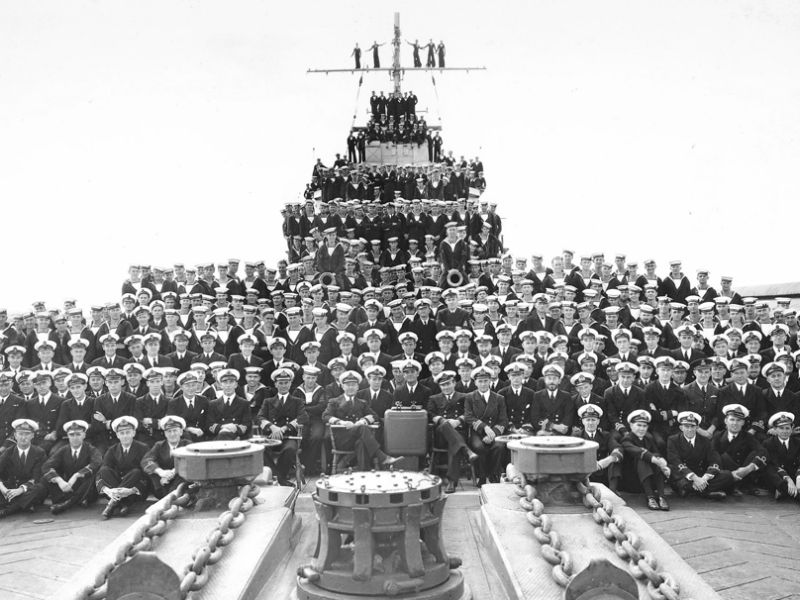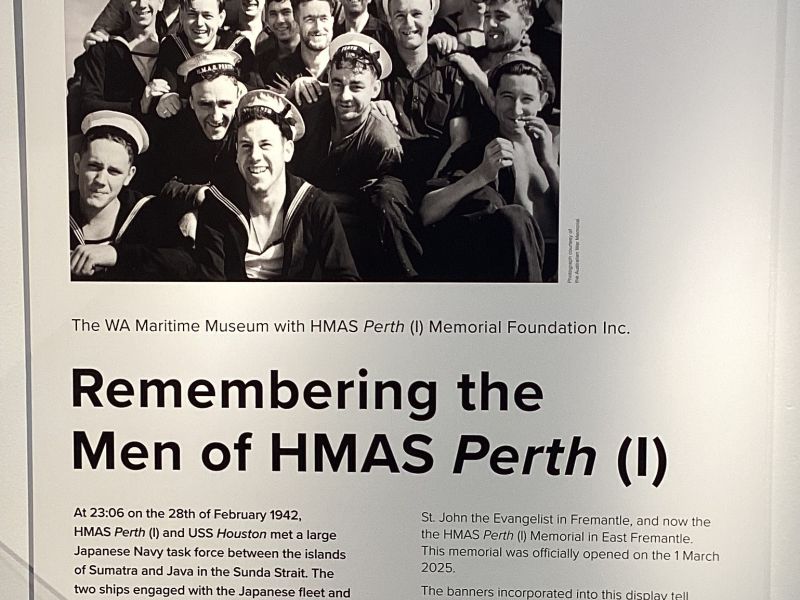Stoker 2nd Class Henry Stuart Absalom, HMAS Perth, Royal Australian Navy
Henry Absalom was born on 1 September 1921 in Terang, Victoria, the son of Henry and Ellen Absalom.
Little is known about his early life. He grew up amidst a large family, and eventually joined the Royal Australian Naval Reserve.
Mobilised for service on 1 April 1941, Absalom was first posted to HMAS Lonsdale, the Port Melbourne naval training base, where he remained until June, when he joined HMAS Cerberus, the primary training establishment for naval personnel.
In October 1941, as a newly passed-out stoker 2nd class, Absalom joined HMAS Perth, one of three modified Leander Class light cruisers used by the Royal Australian Navy during the early part of the Second World War.
Having served in the Mediterranean, the Atlantic and the Indian Oceans, Perth had transferred to the Pacific to reinforce Allied naval forces opposing Japan. In February 1942, the Allies established an American, British, Dutch and Australian naval “Combined Striking Force” for the protection of Java. Perth was part of the “ABDA Eastern Striking Force”, which included the Dutch cruisers Java and De Ruyter, the British cruiser Exeter and the US heavy cruiser Houston.
On 27 February, the force sailed to intercept the Japanese “Eastern Invasion Force” which comprised four cruisers and 14 destroyers, escorting 41 transport vessels. At about 4 pm, the two forces met in an action which lasted much of the night. Outgunned, the Allied force was unable to engage the invasion fleet transports, which escaped to the north as their escorting warships pressed their attack.
Allied casualties were heavy. Houston and Perth, the only large Allied ships to have survived the battle, made for the southern coast of Java. The two ships attempted to resupply, but fuel shortages meant that Perth received only half her normal fuel capacity, and a lack of shells left both cruisers with little ammunition.
Late on the evening of 28 February– as Perth and Houston entered the northern entrance to Sunda Strait and were tantalisingly close to the open sea and safety – they unexpectedly encountered the Japanese “Western Invasion Force” escorted by a large Japanese flotilla. It consisted of two light cruisers, eight destroyers, a minelayer and was supported by another four cruisers, an aircraft carrier and additional destroyers in the immediate vicinity.
Heavily outnumbered, running low on ammunition and constantly altering course to avoid attack from every direction, the Australian and American cruisers fought against impossible odds.
Perth and Houston sank a Japanese transport and a minesweeper, and severely damaged a further three transports. But the end was inevitable.
At midnight, with ammunition running low, Perth’s Captain “Hec” Waller, ordered his ship to try to force a way through.
Soon after midnight the first torpedo struck. With ammunition expended and her crew reduced to firing practice shells and illumination starshells, a second torpedo hit Perth. Waller gave the order to abandon ship as Perth sank in the early hours of 1 March.
Houston, now the sole Allied combatant, faced the might of the entire Japanese force and was sunk some 20 minutes later. The captains of both vessels went down with their ships.
Of the 686 men aboard HMAS Perth, more than half – over 350 officers and ratings – perished. Among their number was Henry Absalom, who was 20 years old.
Of the survivors captured by the Japanese, a third died as prisoners of war.
With no grave but the sea, today Henry Absalom is commemorated at the Plymouth Naval Memorial in Devon, England, which is dedicated to British and Commonwealth sailors who were lost in the First and Second World Wars and have no known grave.
- AWM Roll of Honour https://www.awm.gov.au/collection/R1690330
- HMAS Perth 1 Memorial https://www.hmasperth1memorial.com.au/the-crew/

 Australian War Memorial
Australian War Memorial